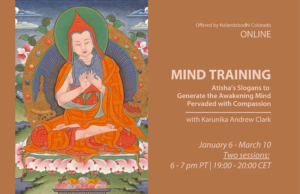Yesterday, as I attended one of my innumerable meetings via Zoom, my co-participants and I began, as so often has been our wont since the lock downs, to talk about the exhausting world of online meetings. It’s so hard, we say, to connect; reading faces, encountering people at such a distance, is unexpectedly tiring.
I chatted along, making the usual comments for a few moments, and then I drew myself up short. I’m a teacher, and after months of Zoom classes and meetings to prepare for a new school year, I am back in the classroom—and I would give much to be online feeling the loss of connection.
Each morning I leave far earlier than I must, to beat the transit crowds. As I sit on the subway and then the bus, I find my eyes straying from my book, glancing about: Is that stranger too close? Oh, dear, he pulled down his mask, has it below his nose. I debate saying something, moving seats, or assuming I’m overcautious. And so it goes.
The day with the students is better. Unlike so many schools, ours has been mindful; spacing is good if not perfect, groups are small, and everyone must wear a mask. But the relief I expected to find in the classroom again is not so fulsome as I had hoped. I can see only parts of faces, no smiles. When I see my students outside, unmasked, I often can’t recognize them. Our voices are muffled. The school, quite rightly, has moved out the big oak table we once gathered around and replaced it with the ranked desks of my childhood. Small groups are forbidden in the time of social distancing.
It would be a relief to be exhausted by Zoom again, to see my students’ digitized faces, to hear their voices clearly, and to avoid the daily transit challenges. As my mother used to say, “Be careful what you wish for; you just might get it.”
Practice
As I contemplate these changes, balance one undesirable reality against another, I find the following practice especially helpful:
- Sit for a few moments and breathe. Find a still point.
- Then imagine a conversation: your last Zoom call, or the last heavily masked encounter that feels so remote despite proximity.
- Visualize that person and yourself in a warm room, seated comfortably, smiling and laughing together. Bring your friend or colleague’s face as clearly to mind as possible.
- Allow the sense of connection to pervade all the senses. Imagine the feel of buttery upholstery on your skin, the slight stirring of air from another person’s breath. Hear the sounds of the room cushion your conversation.
- After a few moments, allow the visualization to recede and rest in the feeling of connection.
This simple practice can be used anywhere and anytime that you feel anxious or agitated by unexpected situations or results.

Laura McRae has been a student of Dzogchen Ponlop Rinpoche since 2005. Born in Los Angeles and educated in Houston, she is teacher of English and Creative Writing in Toronto, Ontario, Canada. Her first full-length collection of poems, Were There Gazelle, appeared from Pedlar Press in spring of 2020.






